In fig potential difference between the points X and Y, when C1=2μF,C2=3μF,C3=4μF,C4=5μF and e.m.f of battery is 5 V.
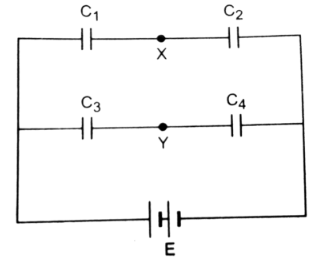
Equivatent capacity of C1 and C2 is C' ,
where 1C+1C1+1C2=12+13=56,C'=65μF.
Charge on C1orC2=q1=C'V=65×5=6μC.
Potential difference across C1isVX=q1C1=62=3V.
where 1C''=1C3+1C4=14+15=920,C=209μF.
Charge on C3 or C4=q2=CV=209×5=1009μC
Potential difference across C3 is VY=q2C3=100/94=259V.
VX−VY=3−259=29V=0.22V
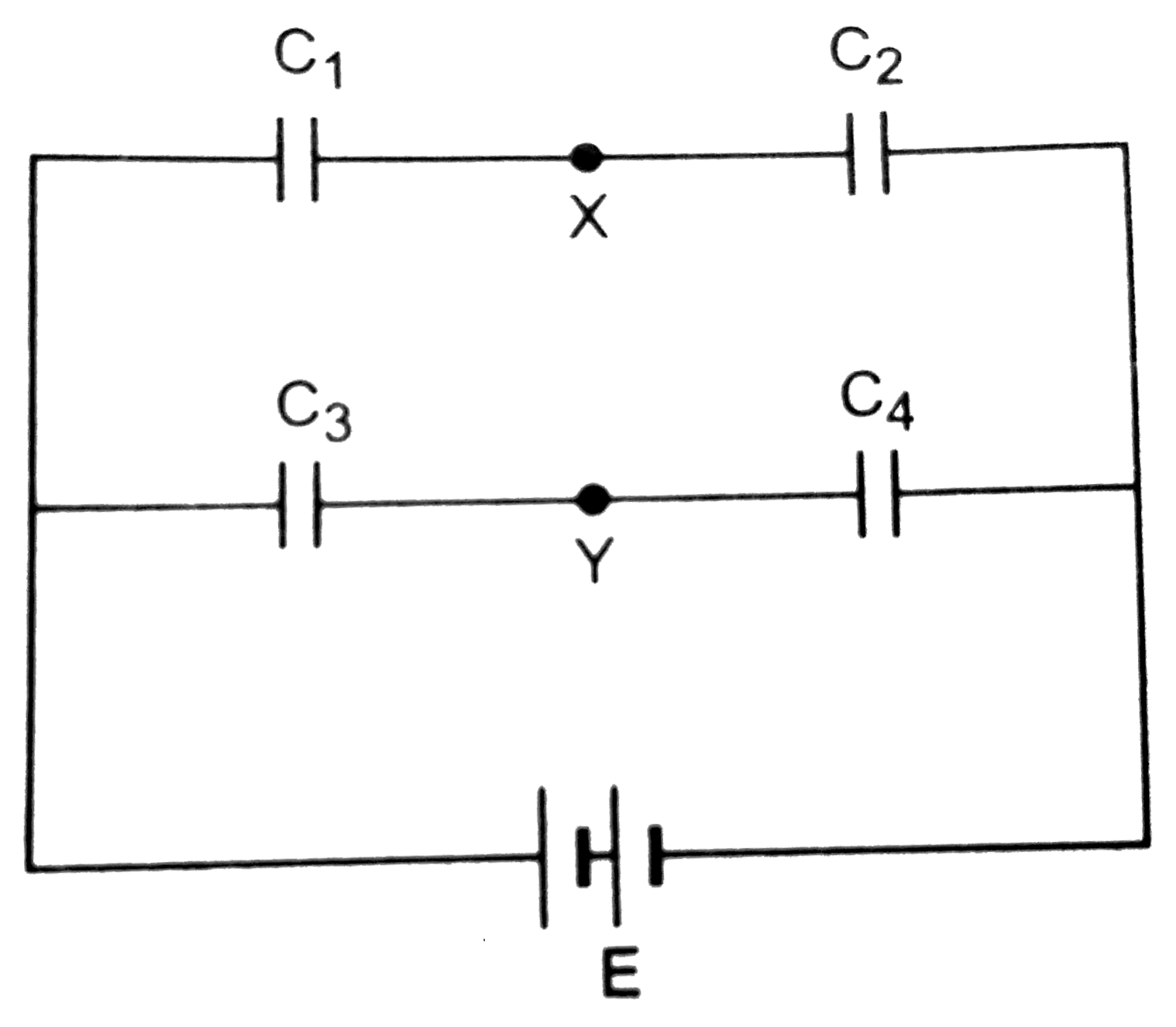
Similar Questions
Find the equivalent capacitane between the points P and Q as shown in Fig. Given C=18μF and C1=12μF
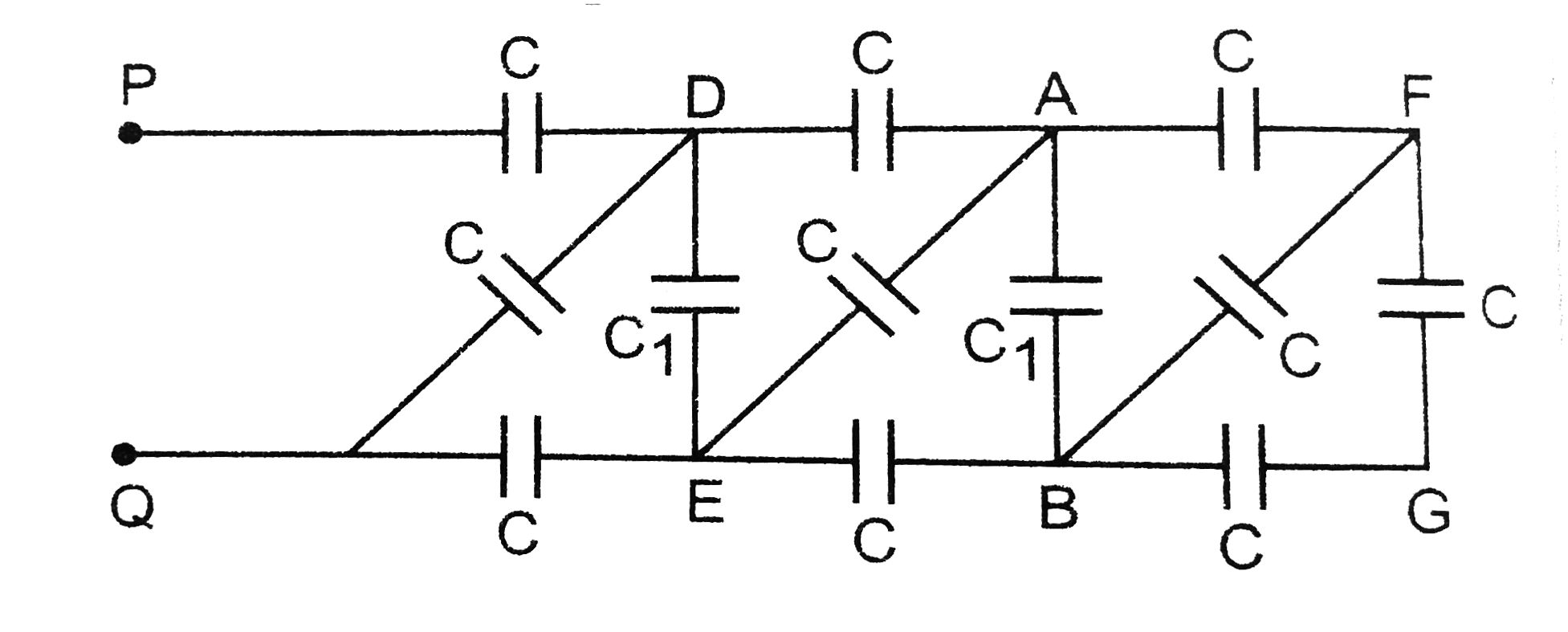 View Solution
View SolutionIn the figure given below, find the, (a) equivalent capacitance of the network between points A and B. Given: C1=C5=4μF, C2=C3=C4=2μF (b) maximum charge supplied by the battery, and (c) total energy stored in the network
 View Solution
View Solution
Knowledge Check
- Question 1 - Select One
In, given C1=3μF,C2=5μF,C3=9μF, and C4=13μF. What is the potential differnce between points A and B?
 .A13VB9VC0VD11V
.A13VB9VC0VD11V - Question 2 - Select One
Four capacitors with capacitances C1=1μF,C2=1.5μF,C3=2.5μF and C4=0.5μF are connected as shown in Fig, to a 30 voltg source. The potentail difference between points a and b is
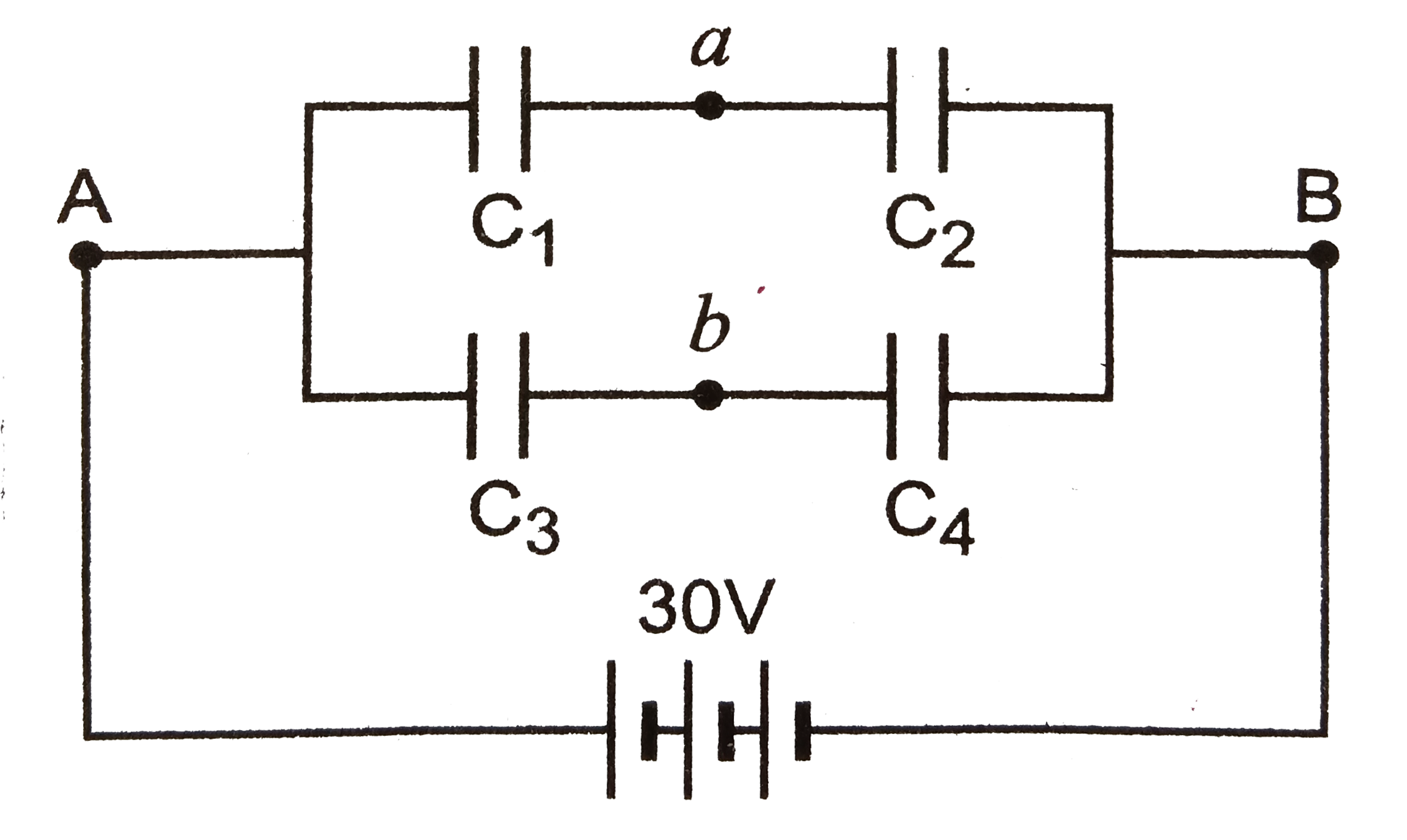 A5VB9VC10VD13V
A5VB9VC10VD13V - Question 3 - Select One
The ratio of potential differences between 1μFand5μF capacitors is
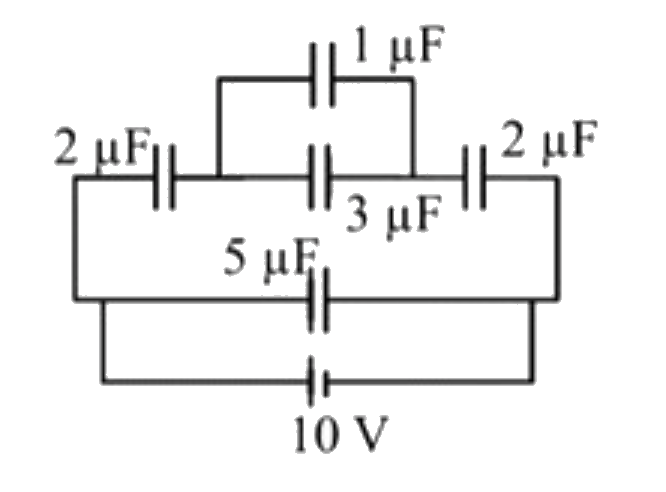 A1:2B3:1C1:5D10:1
A1:2B3:1C1:5D10:1
In the circuit shown in Figure E=12V,C1=4μF,C2=2μF,C3=6μFandC4=3μF
Find the heat produced in the circuit after switch S is shorted.
 View Solution
View SolutionIn the figure given below, find the
(a) equivalent capacitance of the network between points A and B.
Given: C1=C5=8μF,C2=C3=C4=4μF.
(b) maximum charge supplied by the battery, and
(c ) total energy stored in the network.
 View Solution
View SolutionIn the circuit shown the capacitors are C1=15μF,C2=10μFandC3=25μF. Find
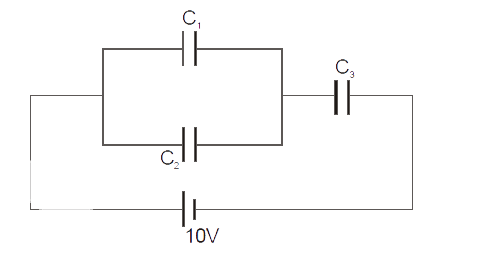
the charge on each capacitor andView SolutionIn the given network capacitance, C1=10μF,C2=5μF and C3=4μF. What is the resultant capacitance between A and B?
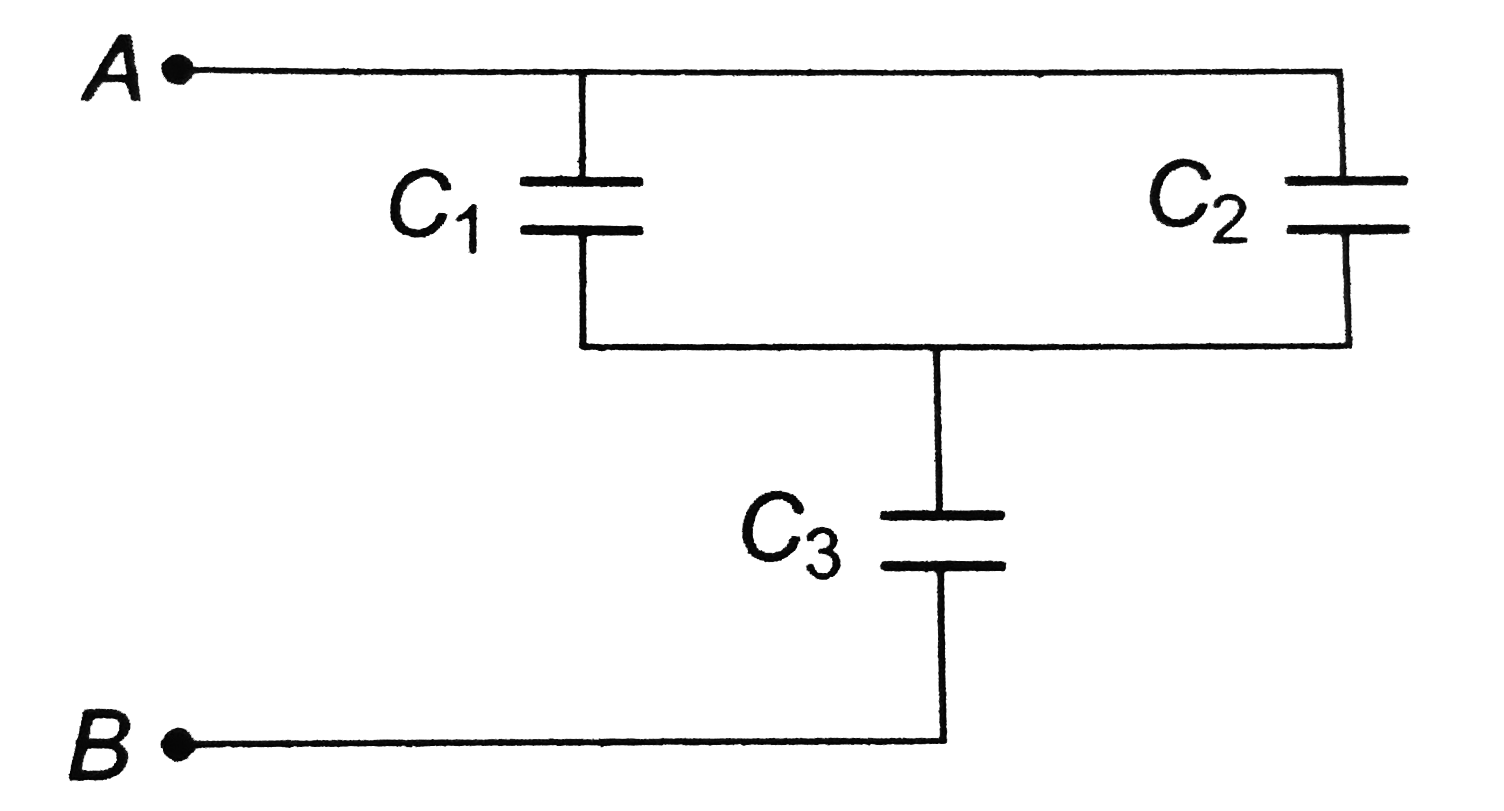 View Solution
View SolutionA potential of V=3000V is applied to a combination of four initially uncharged capacitors as shown in the figure. Capacitors A, B, C and D have capacitances CA=6.0μF,CB=5.2μF,CC=1.5μFandCD=3.8μF, respectiely. If the battery is disconnected, then potential difference across capacitor B is (approximately)
 View Solution
View Solution

